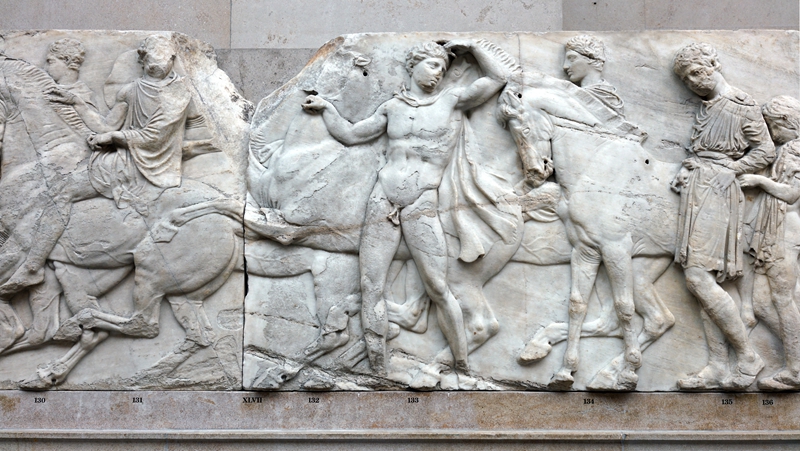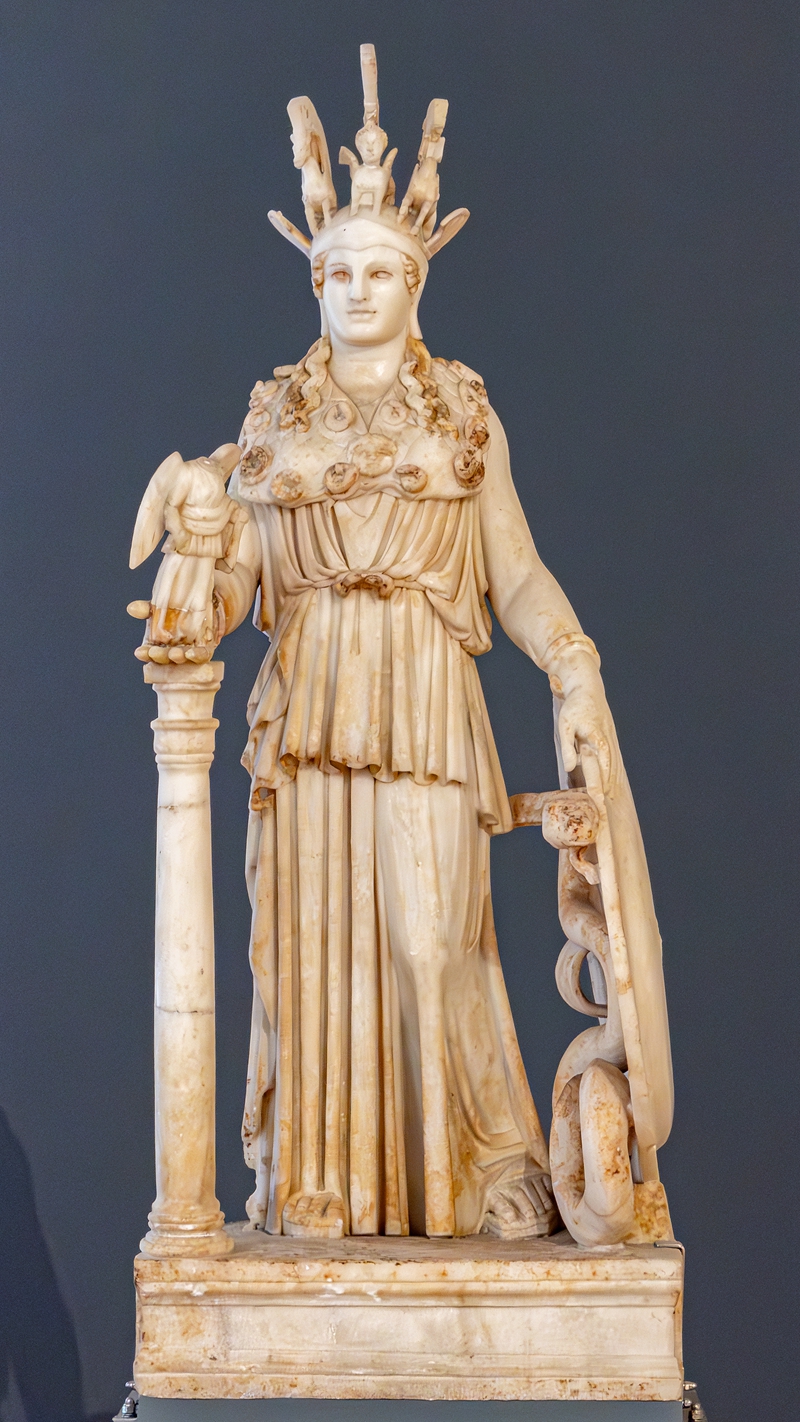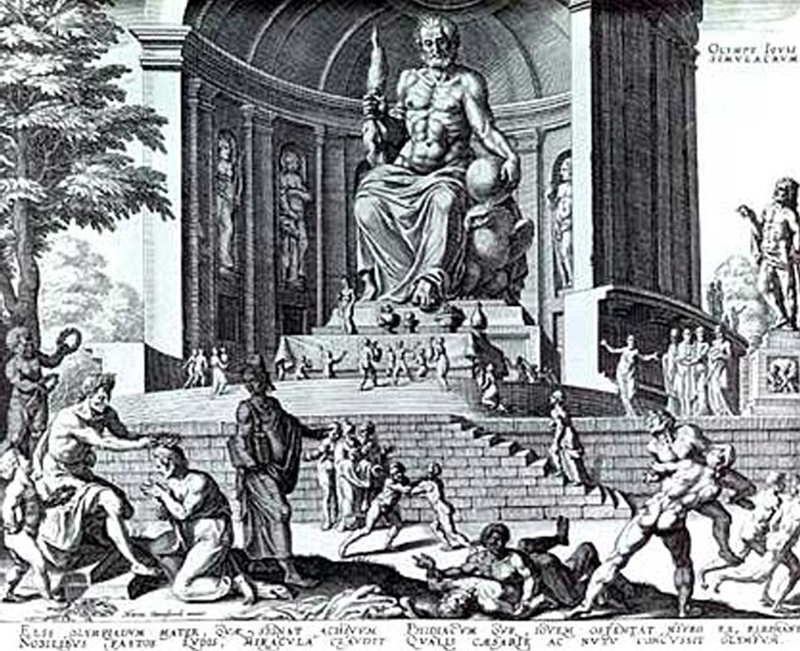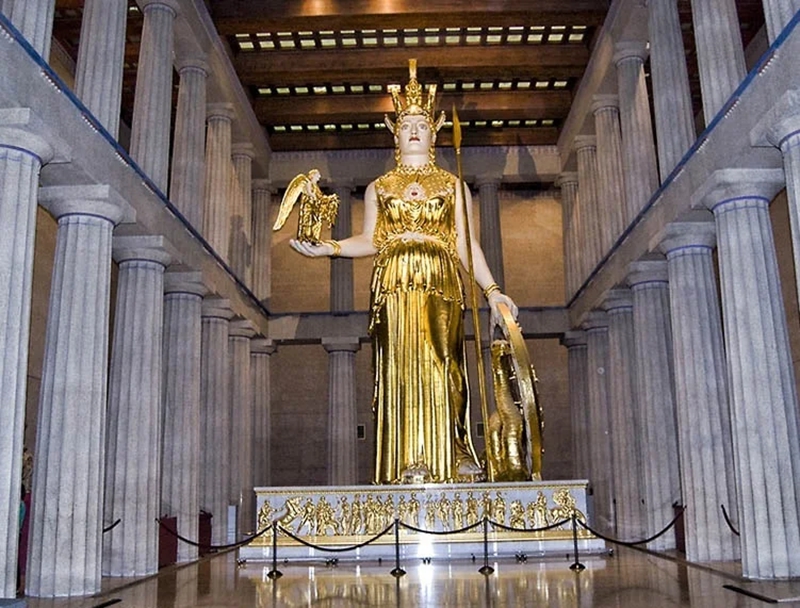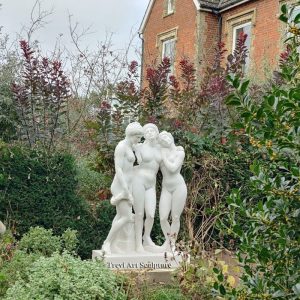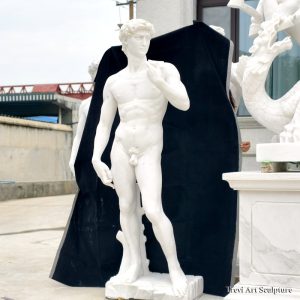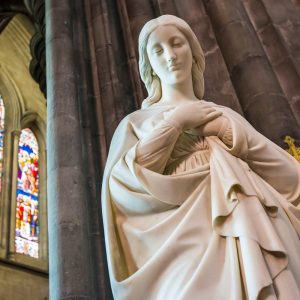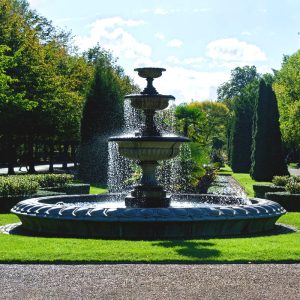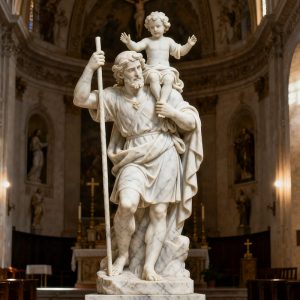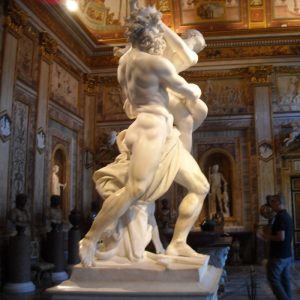Phidias’ original sculptures are renowned for their unique artistic style and exceptional craftsmanship, laying the foundation for classical Greek art. His works not only reflect ancient Greece’s pursuit of “ideal beauty” but also embody a sense of sanctity, solemnity, and harmony. Below are the key characteristics and defining features of his sculptures:
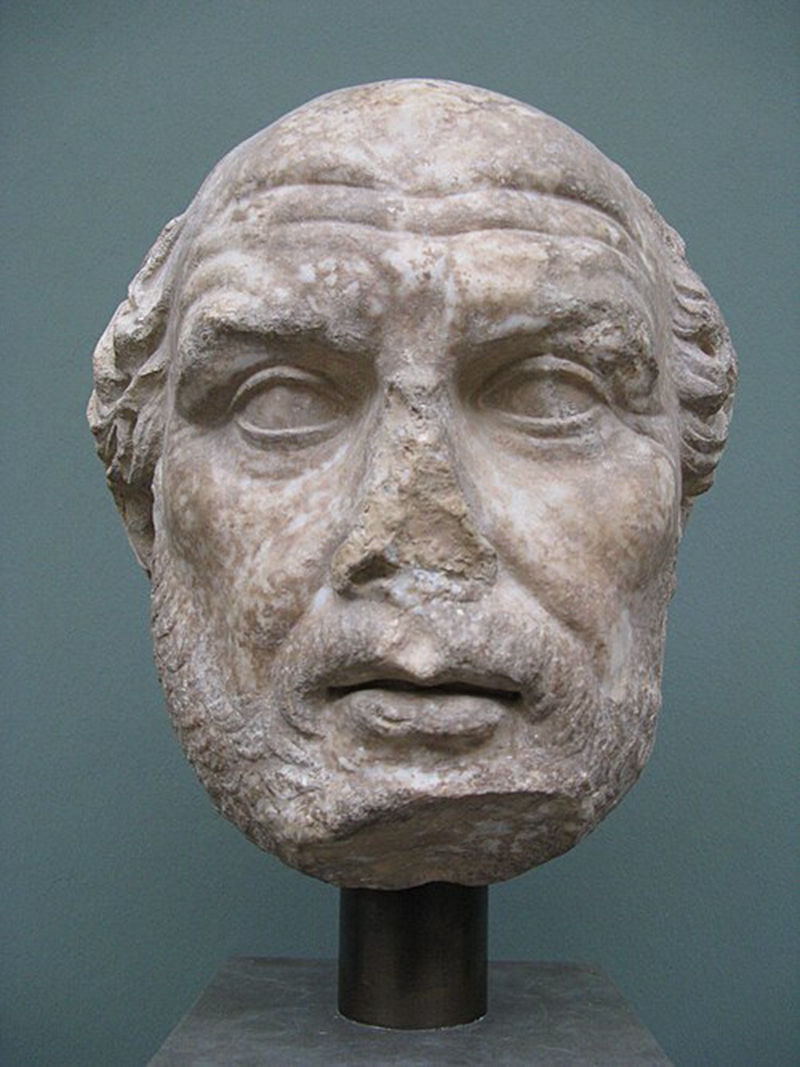
Key Characteristics of Phidias’ Sculptures
1. Idealized Beauty
Phidias’ sculptures emphasize the idealized forms of gods and humans. Instead of focusing on individual traits, he created figures with perfect proportions, symmetry, and harmonious composition, reflecting an idealized version of beauty.
2. Sacredness and Majesty
His works often revolved around mythological themes, particularly the Greek gods. Through his masterful carving techniques and the treatment of expressions and postures, Phidias imbued his statues with a sacred and majestic aura.
3. Luxurious Materials and Refined Technique
Phidias was adept at using precious materials for his sculptures, especially in his chryselephantine statues (sculptures made of gold and ivory). These works demonstrate his exceptional skill in working with these luxurious materials.
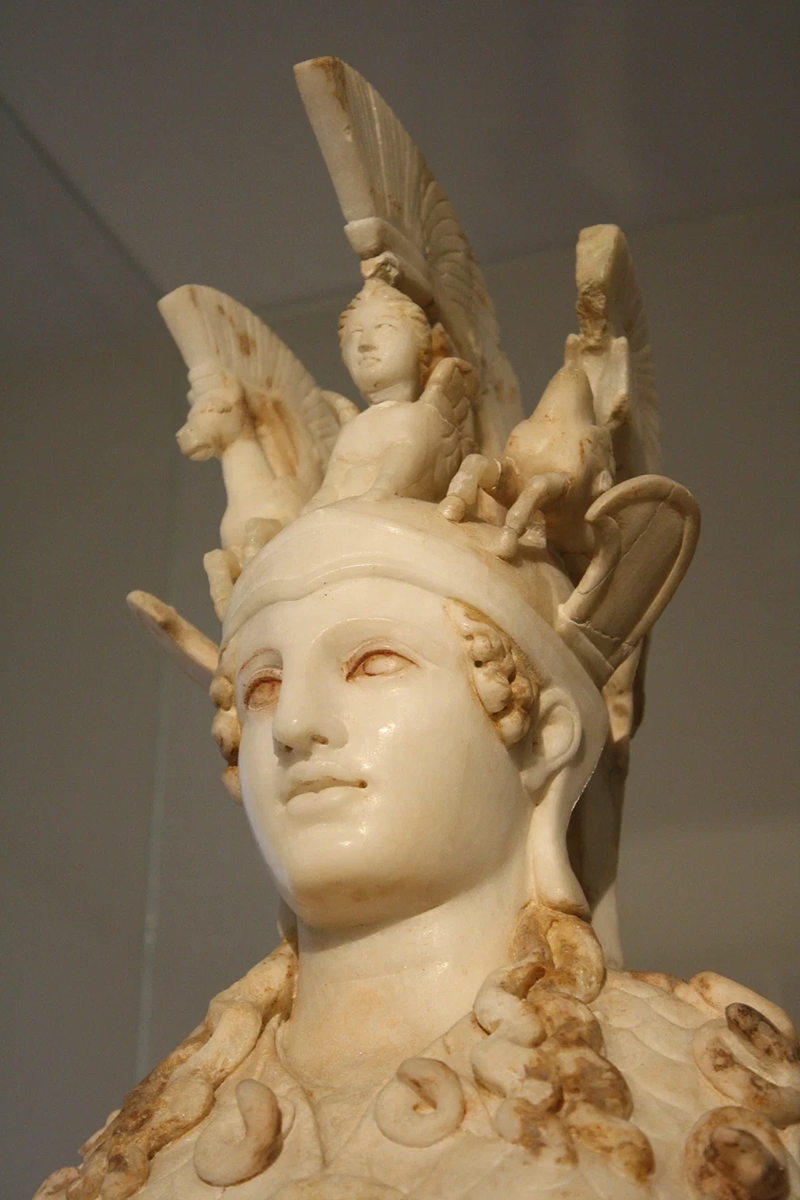
4. Balance of Movement and Stillness
Phidias masterfully balanced dynamism and stillness in his sculptures. While his divine figures often stood or sat in dignified poses, the flowing drapery, body twists, and muscular tension gave his statues a vivid sense of life.
5. Monumental Scale and Commemorative Nature
Phidias was known for creating colossal and monumental sculptures, often for temples. Through their sheer size and intricate details, these works aimed to convey the grandeur and authority of the gods. For example:
The Statue of Zeus at Olympia stands approximately 13 meters tall.
The Athena Parthenos, an approximately 12-meter-tall statue of Athena.
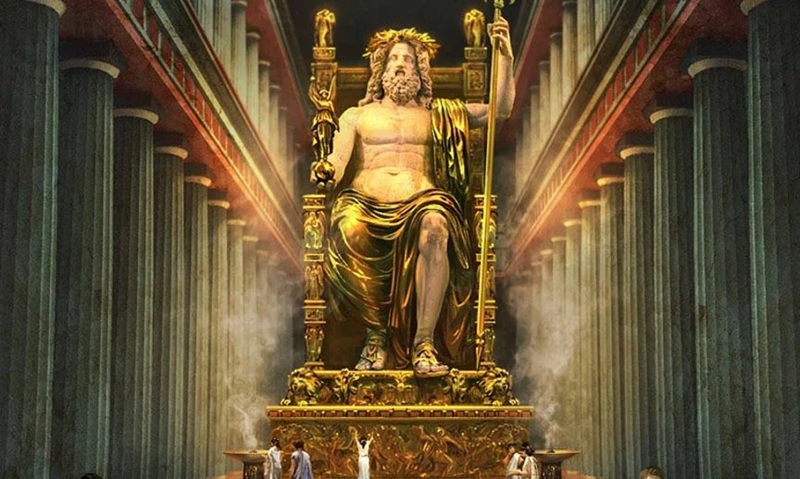
6. Narrative Depth and Layering in Reliefs
Phidias’ skill in relief sculpture is evident in the decorations of the Parthenon, such as the east pediment and the Ionic frieze. He demonstrated an extraordinary ability to depict narrative scenes with rhythm and realism. For example:
The reliefs of horses, warriors, and gods are full of movement and energy.
The natural flow of figures and dramatic composition create vivid and dynamic storytelling.
Major Achievements
1. Parthenon Sculptures
Phidias oversaw the sculptural work for the Parthenon, including both the interior and exterior reliefs and decorations. His most famous contribution was the design of the giant Athena Parthenos statue:
Made of gold and ivory, the statue stood around 12 meters tall.
It symbolized Athena, the goddess of wisdom, and became a defining masterpiece of Greek art.
2. Statue of Zeus at Olympia
Phidias also created the Statue of Zeus at Olympia, one of the Seven Wonders of the Ancient World:
Made of gold and ivory, the statue stood approximately 13 meters tall.
It represented the might and grandeur of Zeus, showcasing the religious and artistic achievements of ancient Greece.
Legacy and Influence
Phidias is celebrated for his mastery of sculpture and meticulous attention to detail. His emphasis on proportion, elegance, and divine majesty set the standard for “ideal beauty” in classical Greek sculpture. His works had a profound impact on subsequent European art, particularly during the Renaissance, when artists sought to emulate his techniques and ideals.
Phidias’ sculptures are renowned for their monumental scale, idealized beauty, solemnity, intricate details, and dynamic expression. His works represent the pinnacle of ancient Greek marble art sculpture, embodying the religious, cultural, and philosophical ideals of his time. Phidias’ influence extends far beyond his era, shaping the course of Western art and remaining an unparalleled peak in art history.
